Monday, August 07, 2006
SPECIAL ANALYSIS - Defense & Foreign Affairs
August 7, 2006 Confidential © 2006, GIS
1. Special Report: Cuba’s Strategically-Blessed Transition of Power Gives Maximum Opportunity to Raúl Castro to Consolidate Control
2. Exclusive: Turkey, Installing New Chief of General Staff, Escalates Plans for Operations in Iraqi Kurdistan, and in the Ægean, and Retains Key Links with Iran
3. Essential Reading: Defense & Foreign Affairs Handbook Again Takes Center Stage (the intelligence professional's reference book or CD)
Cuba’s Strategically-Blessed Transition of Power Gives Maximum Opportunity to Raúl Castro to Consolidate Control
Analysis. By Gregory R. Copley, Editor, GIS.
The transition of power in Cuba was never expected to be easy, nor free from US attempts to exploit it. And just as US policy and intelligence officials have pondered the Cuban post-Fidel Castro process and its possible consequences, so, too, have Cuban leaders made their own considerations. Clearly, no time was ideal to surrender the baton of power as far as Fidel Castro — undisputed leader of Cuba since 1959 — was concerned, but if any time had to be better than another, then the right time was now, as the US was preoccupied with the build-up toward possible nuclear conflict between Iran and Israel.
There was no doubt that Pres. of the Council of State Fidel Castro Ruz was in poor health, and that, after 47 years in office, he was close to the end of his reign.1 Equally, given the considerable web of discussions during the past year involving a network of anti-US leaders — of Iran, North Korea (DPRK), Venezuela, Bolivia, and others — that the Cuban leadership was aware of the gravity and scale of the developing conflict in the Middle East.
The DPRK, in particular, is an active participant and ally with the Iranian clerical Government in global-scale deception operations designed to provide strategic diversion for each other to divide Western, particularly US, military and policy focus during periods of critical activity.
Given the recent intense liaison between Iranian leaders and those of Venezuela, Cuba, and
Bolivia — and possibly the People’s Republic of China (PRC) — it is not unreasonable to suspect that Fidel Castro elected to make his medically-inevitable move at this time.
Coincidence of Pres. Castro’s perceived medical emergency with the Middle East crisis cannot be ruled out, of course, but if coincidence it be, then it was fortuitous for the Cuban transition process, allowing Defense Minister and brother of the President, Gen. Raúl Castro Ruz, to assume power “temporarily” for the first time, officially, in 47 years.
A week after the transfer of power, affairs in Cuba seemed to be moving smoothly, without serious challenge from within or from the US.
The prospect exists that Fidel Castro could re-emerge briefly, or iconically, in the future —
assuming he is still alive — to assist in the dampening down of any unrest, because the reality is that all those who have control of any power bases in Cuba today are so empowered because Fidel Castro dispensed and allowed such power. And none more than his brother, Gen. Raúl Castro. Fidel Castro handed power to Raúl just two weeks short of the President’s 80th birthday on August 13, 2006, but his younger brother, the Defense Minister and First Vice-President of the Council of State and Council of Ministers, is also not young, at 75.
It is assumed that Raúl Castro will focus almost exclusively on consolidating power in his own name for as much time as he has before Fidel dies, or is declared dead, and that no substantive internationally-significant initiatives would be attempted until that time. In this, Raúl Castro is expected to be competent and as ruthless as necessary; he has a track record of using power effectively and unsqueamishly, particularly during times of heavy Cuban military operations — and even revolt in the Armed Forces and intelligence organs — in Angola, Ethiopia, Grenada (1983), and elsewhere. He played a significant rôle during the late 1970s in the Mariel Boatlift, for example, an operation which required considerable audacity, given that the aim was to cleanse Cuba — and at the same time pass the problem to the US — of all those known to have been infected with a disease contracted and brought home by Cuban troops during the Angolan wars, AIDS.
The Mariel Boatlift was not a disorganized flight to freedom that the then-US Carter
Administration portrayed it to be. It was the organized forced expulsion of medically and socially “undesirables” from Cuban society, and it was conducted with stealth and precision.
None of the other obvious potential contenders for power in Cuba — such as the influential
Secretary of the Council of Ministers (and Vice-President of Cuba), Carlos Lage Davila, 54; or
Foreign Relations Minister Felipe Perez Roque, 41; or former Foreign Relations Minister Ricardo Alarçon, 69 — have blood on their hands in the same way that Raúl does. And we saw as the USSR moved toward collapse in the 1980s that the post-revolutionary and post-purge surviving leaders who emerged, culminating with the ineffective and ideologically uncommitted Mikhail Gorbachev, did not have the necessary ruthlessness to enforce compliance from their system.
In Cuba, outsiders have never been permitted to see whether Raúl Castro has a strong
ideological fire which would sustain him, nor even whether he is capable of sustaining power in his own name, absent the popular and populist authority of his brother. It is known that he can do whatever is necessary in the name of his brother's State, but not whether he can do it in the name of his own. But at least, given the Middle East crisis which will continue well beyond the Summer of 2006, he has a window of opportunity to ensure domestic compliance at least until some major pressures emerge from within or against the Cuban State. Moreover, once Fidel Castro is completely out of the political equation — and, like Franco in Spain and Sharon in Israel, that could could be months, assuming Fidel does not rally to health again — Raúl may well attempt to open a more pragmatic line of international relations with the outside world.
There are, in this, two factors to consider: firstly, if Cuba under Raúl Castro attempts to improve economic conditions and freedom of movement, communications, and the media, he will begin the process of raising expectations. All transitions from hardline, autocratic administrations have demonstrated that such rising expectations always exceed the ability of the State to satisfy. Raúl Castro’s only ability to ride this process would be to blame all ills on his brother (an unlikely approach, which probably would not be accepted), or to rule through a series of new faces, retaining his grip through the Armed Forces, police, and security organs. Secondly, if the Iran-DPRK strategy succeeds in destroying Israel and demonstrating a relative “invincibility” due to their nuclear power, then the West — from Japan, South Korea, and Taiwan, to Western Europe and North America — would be on the defensive. Under such a scenario, Raúl could retain and in fact galvanize a hardline rule in Cuba, building on the alliances he has with Venezuela and Bolivia in the region, and with Iran, the DPRK, and the PRC.
In the short term, the Cuban Government under Raúl Castro must now ensure that there is no “run on the borders” as there was in the former Warsaw Treaty states bordering Western Europe.
It was this collapse of authority over the man in the street which marked the final end of the
Soviet Union and its control over Eastern Europe, even though that public clamor for exit was
merely symptomatic of the decade-plus of decline of authority of Soviet leaders. Raúl Castro and his team are aware that they cannot allow unbridled public exodus from the island; that would spell an instability which perhaps could not be contained.
Moreover, it would signal to the US and others that the time had come to enter the fray.
Footnotes:
1. Cuban officials acknowledged that Fidel Castro underwent “intestinal surgery” on July 31, 2006, and said on August 1, 2006, that he was in stable condition and in “good spirits”. A message, ostensibly from Pres. Castro, was issued saying: “In the Cuban situation, based on plans of the empire [ie: the US], my health becomes a secret of state that cannot be divulged constantly. My fellow countrymen should know this. I cannot be in a vicious cycle all day long. ... I can say that it is a stable situation, but a real evolution of my health takes time. So all I can say is the situation will continue stable for many days before a verdict can be issued.” The message said also that “our people will know everything in its due time”. His statement also said: “I cannot make up good news because that would not be ethical. And if it were bad news, the only one who take advantage of that would be the enemy.” The overall statement
was sufficiently elliptical that it raised more questions than it answered. The statement or “letter” was read by Fidel Castro’s secretary, Carlos Valenciaga, on the night of July 31, 2006. In the statement, Castro blamed the surgery on stress, and noted that he would be in bed for several weeks after the operation. Even by late 2005, rumors had circulated of Fidel Castro’s increasingly poor health, with suggestions that he had either cancer, had suffered small strokes, or had Parkinson’s Disease. The Parkinson’s theory, which had been based on accumulating evidence for almost a decade, had been ridiculed by Castro himself over the past few years. But by late 2005, Castro was not appearing at official events which he normally would have attended. Latin American officials who had seen Castro in recent months also spoke of his failing health.
Turkey, Installing New Chief of General Staff, Escalates Plans for Operations in Iraqi Kurdistan, and in the Ægean, and Retains Key Links with Iran
Exclusive. Analysis. From GIS Stations in South-East Europe, Ankara, and Mosul. The
Turkish Armed Forces are positioning themselves to ensure that, in the event that the Iran-Israel conflict strengthens the position of Iran, then Iran does not use its position to move quickly through Iranian Kurdistan to control the oilfields of Iraqi Kurdistan. Although the Turkish ground force presence in northern Iraqi Kurdistan is not highly visible at present, Turkish Special Forces units are working within the area arming and supporting Turcomen Iraqis in preparation for what they believe could be imminent Iranian attempts to destabilize and control the region. The Turkish Army and the Turkish Jandarma (paramilitary police) have some 260,000 to 265,000 forces already stationed in south-eastern Turkey, ready to move in strength into Kurdistan if necessary. Since March 2006, the Turkish Army has conducted 53 operations into Iraqi Kurdistan, ostensibly against bases and assets of the Kurdish Workers’ Party (PKK: Partiya Karkerên Kurdistan), but in reality much of the activity has been to build a network of capabilities based on the Turcomen of the region. Significantly, one of the Turkish operations against the PKK was conducted with Iranian forces, and the Iranians have themselves conducted eight operations against the PKK since March 2006.
The PKK responded with 69 operations against Turkish targets, and during the ongoing
operations from March 2006 until the end of July 2006, the Turkish forces suffered 165
casualties, including 144 soldiers, seven junior Army officers, and a lieutenant-colonel. As well, 36 Iranian troops were killed during the period, and 43 PKK combatants were known casualties.
It was reported by highly-reliable first-hand sources that Turkish forces, using chemical weapons, killed 14 Kurds on March 25, 2006. Documentary evidence has been seen by GIS/Defense & Foreign Affairs on issues relating to Turkish manufacture of chemical and biological weapons, as well as a 1986 written order by a Turkish general authorizing use of chemical weapons against Kurds.
Also, according to highly-reliable sources, the operational command center for the Turkish forces to invade into southern Kurdistan (northern Iraq) was constructed in the mountainous area of Gabar, in Simak region. The rapid construction has meant that two company commands have been stationed in military containers. Turkish Gen. Ergun Saigun has frequently visited the camp and he is the Chief of Staff of the operation, which was, until the end of July 2006, directly under Commanding General YaNar Büyükanit, the Commander of the Turkish Land Forces.
The decision for the foundation of this command was taken on February 25, 2006, during a
meeting of the Turkish National Security Council.
It is understood that the Turkish invasion plan for Iraqi Kurdistan involves 80,000 troops entering from four different points on the Iraq-Turkey border. Apart from the routine Turkish Special Forces penetration of the area, Turkey maintains UAV (unmanned aerial vehicle) reconnaissance of the area.
As of early August 2006, it was understood that Turkey and Iran have planned combined
operations against the PKK, despite the fact that both states have mutually competitive —
although undiscussed — grand strategic objectives for the area. It is understood that the main target of the proposed new combined Iranian-Turkish operation would be the PKK base on Mount Kadil. The Iranian branch of the PKK, PEJAK, is based on Mt. Kadil. [Significantly, despite some key strategic differences at a formal level, some elements of the Turkish Government have cooperated with Iran on matters relating to the creation and sustenance of the Turkish (Sunni) branch of HizbAllah, largely because the Turkish General Staff reportedly wanted to use Turkish HizbAllah against the PKK.]
The Turkish forces were given authorization during the last few days of July 2006 from all key elements of the Turkish Government process to proceed with the invasion.
Significantly, on July 31, 2006, Gen. Büyükanit was named Chief of the General Staff of the
Turkish Armed Forces, replacing Gen. Hilmi Özkök, whose retirement had been anticipated,
although not this suddenly. The move was made, presumably, at this time to ensure that the
command structure would be in place before Turkey embarked on a major strategic operation. There was little or no fanfare for Gen. Özkök on his departure, which was regarded as significant.
Clearly, the switch of the most senior commanders was done in an unusual manner, although Gen. Büyükanit — who is known as a tough commander and a committed anti-Kurd — was
clearly prepared for the assignment. Sources told GIS/Defense & Foreign Affairs that the most likely timeframe for the invasion was September 10-15, 2006, although it is conceivable that the currently-escalating Iran-Israel conflict could, should it escalate as it possibly might to strategic weapons, could either hasten or delay the Turkish plans for Iraqi Kurdistan.
In any event, PKK forces are reportedly well aware of the pace of Turkish invasion planning and report themselves to be ready for the confrontation. Turkish sources have indicated that they do not believe that Iran would escalate to full nuclear confrontation with Israel before the end of 2006, but that before that time Israel would be expected, because of the escalation of attacks on Israel, to strike against Syrian targets.
There is some suggestion that the whole period of conflict in the region — not just the ongoing war in Iraq and the Turkish invasion of Iraqi Kurdistan, but also the Iranian-sponsored conflict against Israel — would provide extensive cover and rationale for Turkey to widen its military
operations to consolidate its position in Cyprus and certainly to attempt to create a de facto end to Greek control of much of the Ægean Sea. Some Greek sources anticipate Turkish military confrontations with Hellenic forces in the Ægean to resume toward the end of October and/or early November 2006.
Essentially, some observers believe that, after delivering a punishing intervention against the PKK in northern Iraq (Kurdistan) — while commensurately building up Turcoman strength and
influence — Turkey will demand from the US and EU concessions in the Ægean as part of the
price for withdrawal from Kurdistan. The Greek Government essentially believes that the US
could, and would, pressure Turkey to abandon its plans to invade Iraqi Kurdistan, given the
importance of the area to the US, especially at the current state of the overall conflict in Iraq.
Moreover, the PKK itself has been helpful to the US in the context of operations against both Iran and Syria.
But several sources have indicated that if the US was successful in forcing Ankara to abandon a major invasion of Iraqi Kurdistan, then Turkey would still take advantage of US (and other) preoccupations with the regional conflicts to escalate its position against Greece in the Ægean. This would almost certainly also come within the context of the rejection of Turkey’s progress in entering the European Union (EU), either provoking rejection or responding to it.
Whatever the trigger, the Turkish General Staff appears to believe that the end game with regard to the EU negotiations process is at hand, and with it an end to the need for constraint on the question of territorial claims in the Ægean and with regard to Cyprus.
Essential Reading
Defense & Foreign Affairs Handbook Again Takes Center Stage .
Defense & Foreign Affairs Handbook, 16th Edition. By Gregory R. Copley
(Ed.). Alexandria, Virginia, 2006: International Strategic Studies Association,
PO Box 20407, Alexandria, VA. 22320, USA. ISBN: 1-892998-10-6. ISSN:
0160-5836. 2,343pp + viii pp; hardcover, 8½x11 inch format. US$397 plus
$60 S&H outside the US; $20 in US. Also on CD-ROM with additional
material, in html format at US$379, including S&H.
The true test of the worth of the Defense & Foreign Affairs Handbook, the 16th edition of which has just been published, is that, since 1976 everyone who picks it up — and it weighs close to 10 pounds — and thumbs through it insists that they must have it. After 30 years of refining, edition by edition, it remains indispensable, even in an age of Internet searching. And one of the reasons that it remains unique is that much of its content has been derived from first hand field collection, not from secondary sources, and the editing has remained in the hands of a team, led by in-Chief Gregory Copley, which has decades of experience in the countries being covered and the defense systems listed.
The 16th edition is several hundred pages thicker, and the typesetting more compact, than the 15th edition, but it is not just that the 16th edition delivers more material; it has also been extensively updated and re-written. It covers 246 countries (the CD-ROM has 247: Montenegro became independent after the print edition went to press) in stunning detail in terms of listings of the government, national history, recent developments up to mid-2006, national demographics, political and electoral statistics and details of the legal system, economic and infrastructural data, media, and then the massive sections on defense. The Defense section of each national chapter includes a strategic overview of the national threat and historical defense situation; this is followed by a description of the defense decisionmaking process and hierarchy, followed by an entry on the country’s chemical and biological weapons capabilities. This is followed by a listing of current key defense and intelligence personnel, civil and military. Listings of manpower, military expenditures, and alliances, etc., which follow may appear similar to those produced by the US Central Intelligence Agency’s World Factbook, but the Defense & Foreign Affairs Handbook data is often more comprehensive and mostly more recent. This section is followed by the battle orders, with detailed breakdowns of manpower, organization, equipment, deployment, and the like for each separate armed service.
Where relevant, country chapters detail the main insurgency or terrorist groups, followed by
listings of the national intelligence agencies. Indeed, the Defense & Foreign Affairs Handbook is the only comprehensive source of even the names of the intelligence and security organizations of each country. And each country chapter also features a graphic of the country’s flag and a map of the state.
The “back end” of this encyclopedia has a more general world atlas, a comprehensive (nine
page) section of tabulations of transfers of arms between countries from mid-May 1998 to mid- 2006. Another tabulation section (also nine pages) lists all the changes of governments worldwide from 1998 to mid-2006. And there are many more features to this genuinely unique reference work.
Still, a reader might be tempted to ask why he or she should bother in this Internet age to use a reference book at all. The answer is that print remains the easiest medium to digest. Intelligence analysts working solely from their computer screens often, unwittingly, tend to be selective; their electronic searches find specifics, but without the context which is generally provided by a more holistically-oriented book. And what has been lacking in most intelligence and policy formulation in recent years? Context!
Indeed, the Defense & Foreign Affairs Handbook is a book you can curl up with at night; the
country chapters make fascinating reading because of their approach of including comprehensive histories which put the flesh on the bones of intelligence appreciations. The 30 or so pages of the Iran chapter alone are indispensable for any analyst which to make sense of the current Middle East strategic situation, detailing — apart from other essential material — with Iran’s current nuclear weapons stockpile and how the weapons were obtained, along with the delivery systems Iran has either acquired or developed to deliver them. Those unfamiliar with the breadth and depth of Iran’s strategic weapons programs (and there are many of them) will be transfixed by the realization that the general media and even the “specialist” military publications have left them ill-prepared to understand the gravity of the present Middle Eastern situation.
The Handbook and its sister intelligence services including the on-line Global Information Service (GIS) have been the only comprehensive source of such information. And, moreover, the unique information carried through the years in these services and in the Defense & Foreign Affairs Handbook has been vindicated by the passage of time.
As well, the Handbook is the only source which has detailed and comprehensive data on a
number of territories which are either not yet recognized as sovereign states or which are, merely as territories or regions, of strategic concern, such as Somaliland (former British Somaliland, and a sovereign state awaiting recognition), Nagorno-Karabakh (non-sovereign territory, the understanding of which is critical to an appreciation of strategic prospects in the Caucasus), and Western Sahara (that part of Morocco being contested, essentially by Algerian proxies, but a knowledge of which is essential to understanding Maghrebi power politics); and so on.
Indeed, it is impossible to understand the Horn of Africa, now once again a key strategic locale, without a detailed knowledge of both Somalia (now comprised solely of former Italian Somaliland) and Somaliland. The Handbook, once again, becomes unique and indispensable. As well, reading through the Pacific Islands and Latin American (and some African) states’ chapters, it becomes clear that there is a pattern to current diplomacy by the People’s Republic of China (PRC), which is moving strenuously toward eliminating any remnants of diplomatic influence which Taiwan (Republic of China: ROC) might have. What does this portend for PRC actions in the future, in, for example, places like West Africa (the PRC’s great potential energy supply source), and Latin America (where, for example, the PRC controls the commercial operations of the Panama Canal, but the Panamanian Government recognizes the ROC, not the PRC)?
But when is “enough” in the intelligence business? The Handbook is already a massive and
complex “intelligence service in a box” in a world which is increasingly moving toward electronic solutions. Defense & Foreign Affairs has partially addressed this through the production of a CDROM version of the book, with additional Special Reports sections, and is the parent of the Global Information System, which is the “Handbook on steroids”. Where the Handbook is some 2,500 pages; GIS contains some 250,000 pages, updated daily, 24/7.
But sometimes it is important to just “reach for a book” to get an appreciation of a situation. Even as a daily GIS user, this reviewer still takes time to sit with the Handbook when it is necessary to understand a situation, and not merely to just get some facts and figures.
The question is how much longer the publishers will continue to labor with this great encyclopedic production. Presumably as long as people keep buying it. And it is, after all, essential reading for the strategic policymaker, defense analyst or intelligence officer, as well as for anyone interested in world affairs. — JG
Defense & Foreign Affairs Special Analysis is published for private circulation within the Global Information System (GIS), a service for Government subscribers of the International Strategic Studies Association, PO Box 20407, Alexandria, Virginia 22320,
USA. Tel. +1 (703) 548-1070. email: President@StrategicStudies.org.
Subscribe to:
Post Comments (Atom)

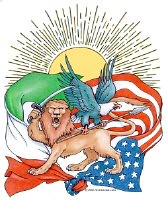
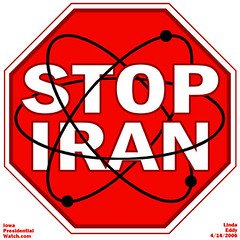

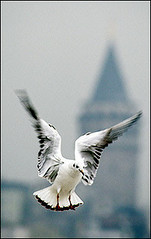



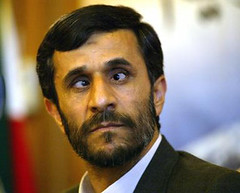



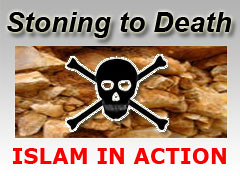

1 comment:
I wonder if Iran, China and N. Korea have the new printed version or are happy with the CDs.
They could I suppose, form a book club and share.
Papa Ray
Post a Comment